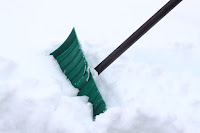I'm sending out this blog post from lovely Charleston, S.C. I was invited here on a press trip sponsored by the American Cancer Society and Extended Stay America hotels, to highlight Hotel Keys of Hope. It's a program that offers low or no-cost hotel rooms to people who are diagnosed with cancer and must travel away from home for treatment.

When you're on a press trip, you rarely know anyone else. It's like being invited to a big party and you don't even really know the host. So no matter how introverted or shy you may be, you have to put yourself out there. In this case, I have stories I have to write about the people I meet, so I really need to put myself out there.
As I was going around meeting my fellow event attendees, I saw a lovely young woman and her companion who I'd not met yet, so I went over to chat. As we exchange the usual "where are you from?" question, she told me they were from Montreal. OK. I live in Montreal. Small world. Where in Montreal. St-Henri. Ok, small world continued. My oldest son lived there for a while and my youngest son works in that area now. I told her I live in NDG (another borough). She said she had too and mentioned a street not far from me. Ok, this world is getting smaller. Then I mentioned the suburb I grew up in and raised my children (Chateauguay), and that's when things got really "woah." She went to school on our street. She is the same age as my daughter, but they went to different schools.
 |
| Nalie Augustin (she's the younger, prettier one!) |
She and her boyfriend, Vee, are taking videos and lots of photos of their time here because that's what they do. Nalie has a YouTube show, in addition to her site, blog, and other social media presence. She offers tips to others who are living through cancer. She has a mission:
"As a Writer, YouTuber and Speaker, I share my journey for 3 reasons:
Inspiration: I want to inspire you to NEVER GIVE UP! Whether it’s cancer, or whatever it is you wish to conquer, take whatever you can from my crazy journey and let it catapult you into LIVING the life you’ve always dreamed of.
Aspiration: I have big dreams and I refuse to let cancer stop me from achieving them. Knowing that life is short and clearly, we have no idea what tomorrow will bring – every day, I aspire to be better, do better and make a difference in this world for as long as I’m in it.
Awareness: It is my duty to prove that breast cancer doesn’t just happen to elder women. That even the healthiest people are not exempted. Generation X- Y – Z: Check your boobs! I vow to leave as much information as possible for women who may follow my footsteps by providing knowledge that I wish I had!"
She's an amazing woman with a great message to share. I'm glad I met her.













